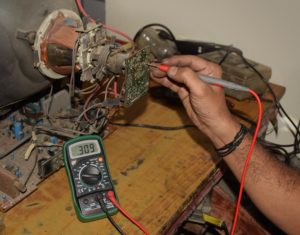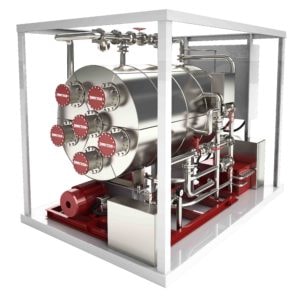Diagnosing Heating Systems With Ohmmeters
Last updated on May 8th, 2025 at 05:05 am
An ohmmeter is a device that measures electrical resistance. It may do so using a micro-ohmmeter for low resistance or a megohmmeter (or Megger) for greater resistances. By accurately measuring ohms, some common heating system issues can be identified.
Ohms
Ohms are the unit of measurement an ohmmeter uses. Named for German physicist Georg Ohm, this unit is the electrical resistance between two points with one volt of constant potential difference. Ohm’s law states, “the current through a conductor between two points is directly proportional to the voltage across the two points.”
If the ohms read too high or low, the measurement can help identify specific issues with a heater.
Identifying Problems with Heaters
Although not all heater issues can be diagnosed with an ohmmeter, it can help diagnose a number of problems. Common issues they can detect include:
- Performance issues
- Wear & Tear
- Breakdown
- System or Component Failure
Used in conjunction with regular maintenance, where you inspect for corrosion and sludge buildup, an ohmmeter can identify critical issues before they worsen.
Using an Ohmmeter
While your control panel can give you overviews of your system, that’s not always enough to pinpoint a problem area. The information you receive may be too general, simply identifying that the issue exists.
This is where an ohmmeter is particularly useful. Because the device measures the resistance between components, testing it between different components makes it possible to determine where exactly the problem is located.
Simple Ohmmeter Instructions
- Turn on. Check the power by making sure the batteries are full or the device is plugged in.
- Balance or ‘zero’ the meter. This resets the device to zero ohms, ensuring an accurate reading. Zeroing can be accomplished by connecting the leads together until the device reads 0.
- Select the appropriate scale. Set the ohmmeter to read tens, hundreds, or thousands of ohms depending on your expected reading. If unsure of what to expect, consult the heater owner’s manual.
- Disconnect the heater. Before connecting the ohmmeter, disconnect the heater from its power supply to prevent electrocution or damage.
- Connect the leads to the opposing ends of the circuit.
- Compare the ohm reading to your expected resistance.
If there is a discrepancy between expected readings and results it can indicate the source of the issue. Generally speaking, if the resistance is too high, the electrical load is unable to pass through the heating element. This can decrease the effectiveness of your heater and may be indicative of component failure or performance issues.
Where the re sistance is too low, an overload occurs. This has the potential to cause damage to the heating system. Often it is the result of a short circuit or another resistance error.
sistance is too low, an overload occurs. This has the potential to cause damage to the heating system. Often it is the result of a short circuit or another resistance error.
Contrasting your results with the user manual can help provide information specific to your heater. This makes it possible to identify the source of the issue as well as potential troubleshooting, repair, or part replacement options.
Other Troubleshooting Options
If your ohmmeter comes back with a normal reading, you may have to look for another answer. Check your digital control panel for other readings. If there are any concerns that the issue could be improper insulation or insulation breakdown, consider megohm testing to identify the issue.
Electric Heater Troubleshooting & Replacement
Wattco custom-manufactures electric immersion heaters and circulation heaters for all major industries. Our team of engineers can help identify existing problems in your heating systems, as well as appropriate repairs or replacements to improve your projects. Our team works with your exact specifications to select the ideal outputs, heater designs, and materials for your projects.
Contact Wattco today for electric heater quotes and troubleshooting information.
